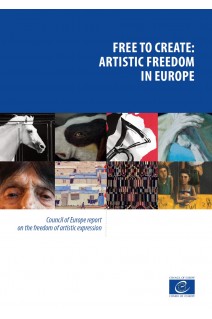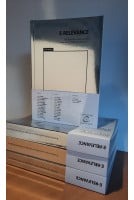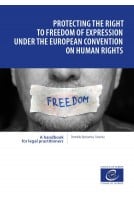CHAPTER 1 – INTRODUCTION
Methodology
CHAPTER 2 – THE COUNCIL OF EUROPE AND THE DEFENCE OF FREEDOM OF ARTISTIC EXPRESSION
The Manifesto on the Freedom of Expression of Culture and the Arts in the Digital Era
Free to Create, Create to be Free
The European Convention on Human Rights
The European Court of Human Rights
CHAPTER 3 – INTERNATIONAL CONVENTIONS PROTECTING ARTISTIC FREEDOM
United Nations “mechanisms”
UNESCO
CHAPTER 4 – DEFINITIONS OF FREEDOM OF ARTISTIC EXPRESSION
CHAPTER 5 – WHO PROTECTS ARTISTIC FREEDOM? – STATES, CIVIL SOCIETY AND CULTURAL ORGANISATIONS
States
Civil society: human rights defenders, media freedom advocacy groups and artistic freedom
Cultural organisations
CHAPTER 6 – STATE OF ARTISTIC FREEDOM IN EUROPE 2020-22
Artistic freedom in numbers
Anti-terror and national security laws to silence legitimate commentary
“Mocking” the power mongers
Blasphemy and defamation against religions
Violence and intimidation
Gender, sexuality and “family values” – Conservative targets
“Nuisance” cases – Strategic lawsuits against public participation
The Covid-19 pandemic and creative freedom
Online dangers and threats
CHAPTER 7 – DEVELOPMENTS WITHIN EUROPE – “UNDER THE RADAR”
Institutional self-censorship – Museums, cultural and academic institutions
Underrepresented groups
Status of the artist – Social and economic rights
Self-critical views from the Nordic Region – Cultural funding and artistic freedom
CHAPTER 8 – NETWORKING, SOLIDARITY, “SAFE EXITS” AND BUILDING PUBLIC UNDERSTANDING – ARTISTS ADVISE
Safe spaces and “emergency exits”
Responding to scandals, smear campaigns and apathy – Arts freedom and the media
Learning about artistic freedom
CHAPTER 9 – RECOMMENDATIONS AND WAYS FORWARD
States
Civil society and cultural organisations
Emergency programmes and safe places
Educational and academic institutes
Legal profession
Funding bodies
Artists
Council of Europe
REFERENCES






